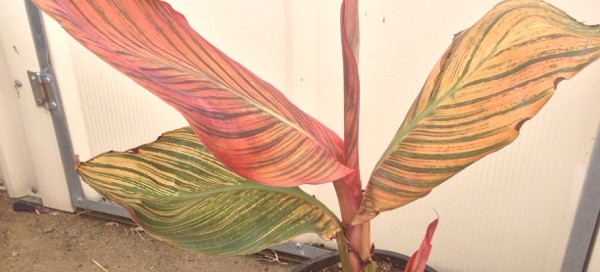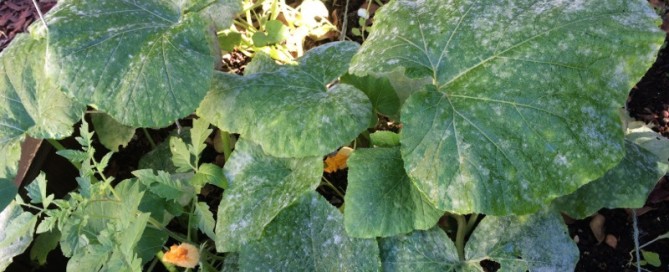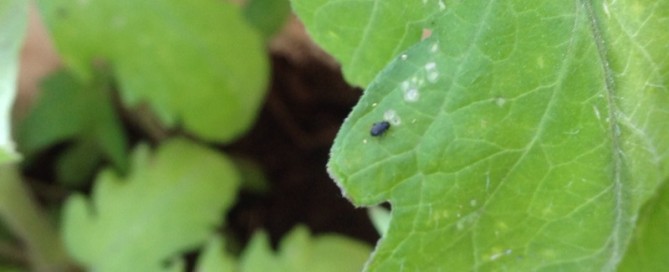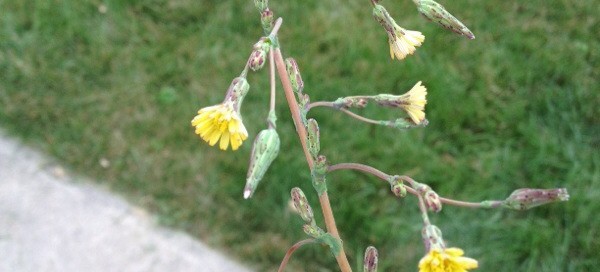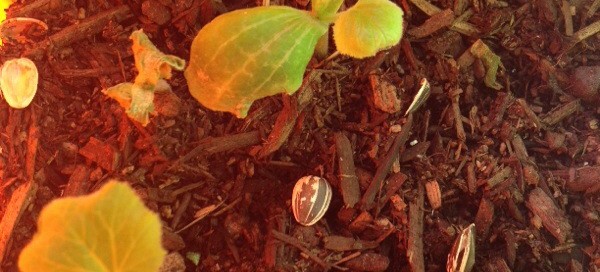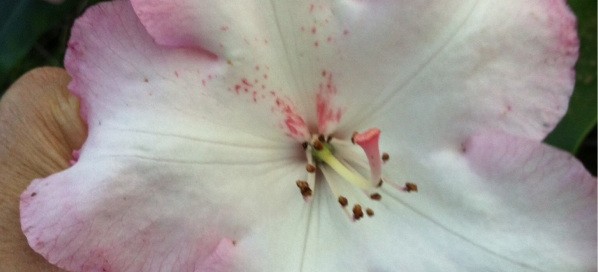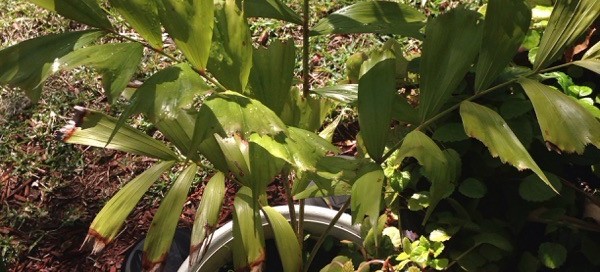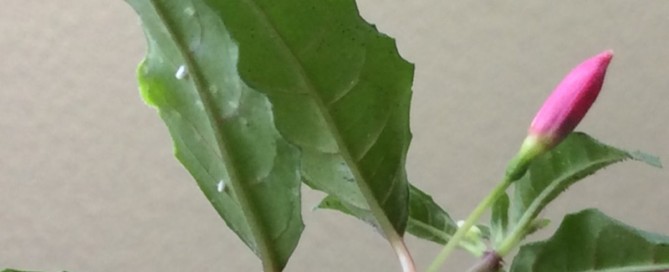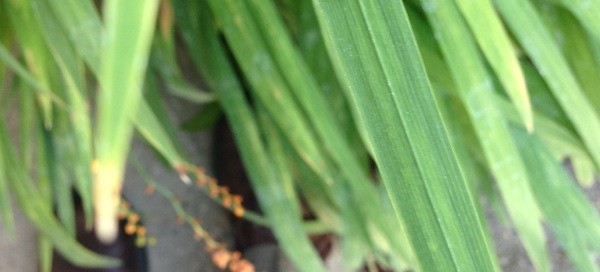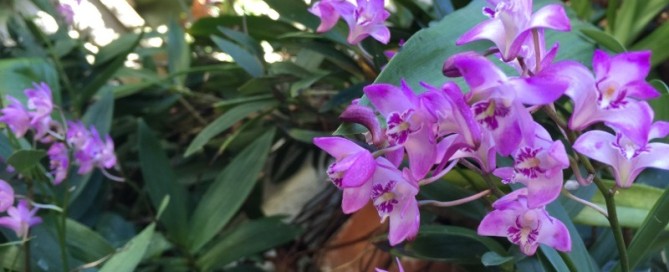Canna Lily
This appears to be a Canna lily and you will be certain when it blooms. Cannas are prized for their showy leaves and striking spikes of large flowers in reds, oranges, white, cream, yellow, pink or bicolors. They develop from rhizomes and do best in full sun and regular water during growth and bloom cycles but will live on year after year with little care. In mild winter areas such as where you live, Cannas can be left in the ground all year long. Where winter frosts are common, the rhizomes can be dug up and stored in a cool, dry place until the danger of frost has passed and re-planted. There are many, many cultivars bearing flowers that come in a variety of stunning hues and bi-colors. Yours may be the cultivar 'Tropicanna,' but there are other similar cultivars as well.
